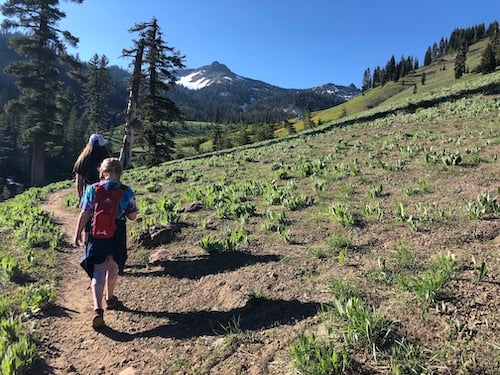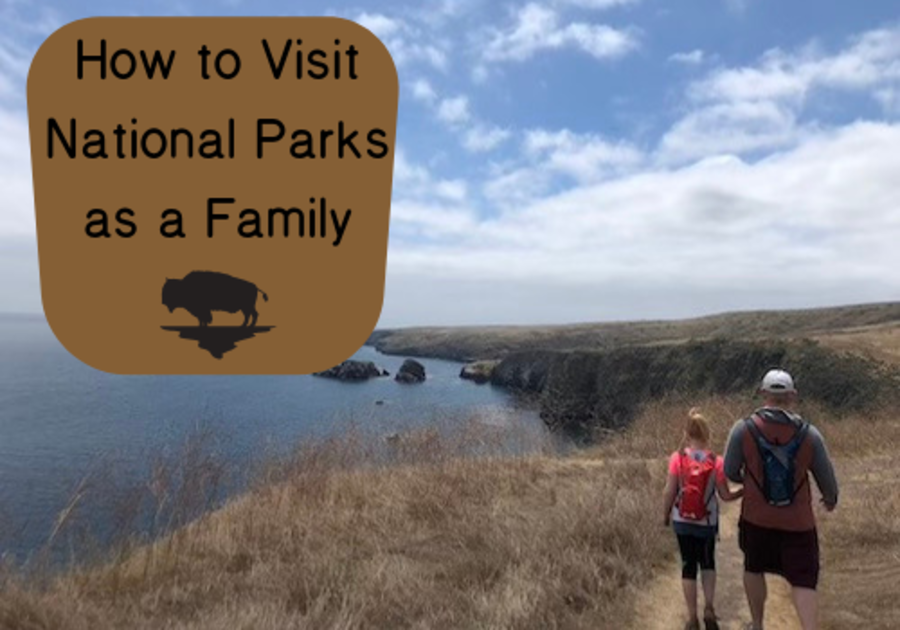My family and I love exploring national parks each summer. We pick a state and then visit as many of them as possible. These amazing parks are truly our nation's treasure and can be enjoyed by families of all ages. I can think of no better way to be out in nature and learn about our country at the same time.
One great time to visit National Parks? On one of their six entrance fee-free days in 2021. On each of these significant days of celebration or commemoration, all national parks will waive entrance fees.
The dates for fee-free days at National Parks in 2021 are:
- January 18: Birthday of Martin Luther King, Jr.
- April 17: First day of National Park Week
- August 4: One year anniversary of the Great American Outdoors Act
- August 25: National Park Service Birthday
- September 25: National Public Lands Day
- November 11: Veterans Day
Here are my top three tips for visiting national parks with your kids:
1. Plan ahead
- Look at the weather. Many national parks take you way above (or below!) sea level. This makes for drastic weather changes. Make sure you know what the typical weather is for when you are going. You can find weather updates on www.nps.gov.
- Take a look at the National Park System website. You will find general information, directions, maps, and facility information (restrooms, parking, visitor centers, etc) for the locations you plan to visit.
- Find out when the visitor center opens and start there. Many national parks have a visitor center with a movie and/or an exhibit about the park. My elementary-aged kids can enjoy the landscape more when they understand the history behind it.
2. Gather information on site before heading out
- Talk to a ranger. Every visitor center has a ranger on staff to answer any questions you may have. With maps and papers in hand, they can point you in the direction of the best hikes and views for your family's needs.
- Get a paper map. Do not depend on GPS navigation or cell service to guide you through a park.
- Ask for a Junior Ranger packet. Every national park has a Junior Ranger program. This is a booklet of assignments kids of all ages can do while visiting a park. It's a great way to keep them engaged and learning while in the park. When completed, kids can turn them in to a ranger and get sworn in as an official Junior Ranger.
Junior Ranger ceremony, during which kids promise to help take care of the parks. |
3. Take a hike!
There is no better way to get to know a national park than to hike in it. Most parks will have trails ranging from a short overlook to an entire day’s hike. They are rated on difficulty by terrain and elevation gain/loss. As our kids have gotten older, we’ve been able to add in two or three-mile hikes, on top of the many half-mile loops they loved as youngsters. Here's what we bring for a day in the park:
- Water: No matter what the season, make sure you have water. There are often refill stations throughout a park, but make a note of where they are on a map, especially in the hotter months. We are big fans of hydration packs you can wear on your back.
- Snacks and/or a meal: If you're going to be moving, you're going to get hungry! Many parks offer picnic areas that offer tables, restrooms, trash receptacles and food storage from animals. You never know what perfect spot you'll find to picnic.
- Garbage bag: Whatever you take into the park, plan to take it home with you. While many parks have waste receptacles for garbage, they aren’t all over the place. We often take a small bag with us for trash, just in case we don’t find an appropriate place to leave it in the park. Remember, national parks are set up to protect the landscape and wildlife, not for our entertainment. Be prepared to leave nothing behind.
- Layers: Whether you are in the mountains, the desert, the forest, or the midwest, national parks often have drastically different temperatures in the morning than midday and even the evening.
- Sun protection: You can still get sunburned in the winter on a snow-covered mountain. Sunscreen, sun shirts, sunglasses, and hats will help protect your skin and eyes.
- Good shoes: Even level hiking paths can have uneven rocks and fallen trees. Make sure you have shoes with good support for all of your walking needs!
- Bug spray: You will know when you need it!
- Gas: If you’re planning on spending all day in a larger, more remote park, make sure you have a full tank of gas. You do not want to get stranded in the middle of a park. Depending on where you are, there may be no cell service.
 | ||
Hiking in Lassen Volcanic National Park. |
Visiting national parks is a great way to see our nation's natural wonders. With a little planning, and by taking your kids' abilities and interests into account, you can make a trip to a national park a vacation your kids will always remember.
A version of this story originally appeared in Macaroni Kid Family Wellness, a national newsletter. Subscribe for free to our monthly Macaroni Kid Family Wellness newsletter to receive encouragement, ideas, and tips on fitness, food, and fun for the whole family!



